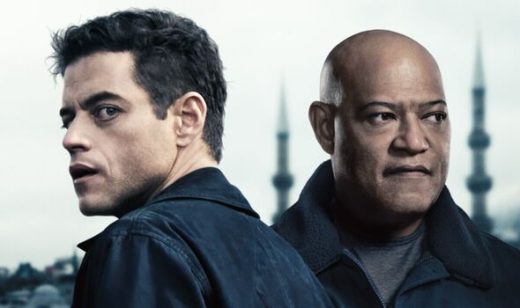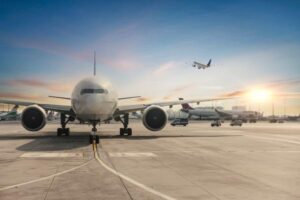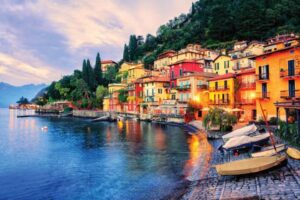First-Time Travelers' Guide to the Philippines
PHOTO: The Philippines are made up of more than 7,100 islands. (photo by Michelle Rae Uy)
Manila may be peppered with towering skyscrapers and ultra-modern malls as far as the eye can see, but don’t let that lull you into a false sense of security.
When it comes to tourism, the Philippine islands are still leisurely puttering along. Many of its best vacation spots still lack much of the infrastructure that Western travelers are accustomed to.
But that’s part of its charm, really! That pastoral countryside vibe that allows one to disconnect is what draws many Australians, Europeans and Americans to this Southeast Asian country.
Still, the limited transportation, narrow roads, non-air-conditioned airports and poor WiFi connections might come as sources of intense frustration to those who are unaware and unprepared. Here are 17 important things one should know about the Philippines before hopping on that plane, including the good and the bad.
MORE Destination & Tourism
—There are more than 7,100 islands, most of which are definitely worth a visit, and island hopping is the most popular vacation activity.
—Everything is cheap, from food to hotel rooms. And at PHP50 for every dollar, $100 can go a long way.
—There are many different dialects, but most people know Tagalog and understand English. This makes it so much easier to get around and even get off the beaten path.
—Filipino food is rich, comforting and very tasty. Some small, local restaurants tend to overcook the meat and over season their dishes. But find good restaurants, and you’ll never look back.
—Each region has its own must-try local dishes. While there are popular “national” dishes like pork adobo, pancit, and Arroz Caldo, many regions and islands have their local fare and delicacies.
—Tricycles are a great mode of transportation. Essentially the Philippines’ version of tuk-tuks, these open-air, three- to four-seater vehicles are not only fun to go on, they’re also faster to get around in when there’s traffic.
READ MORE: Philippines Just Won Summer With Its New Inflatable Island
—Uber is available in Manila and Cebu, and fares are also so much cheaper in the Philippines. Expect to spend $12 or less to get from one city to another in Metro Manila, and that’s with traffic.
—Many hotels are more like boarding houses than actual hotels, with very casual amenities like thin mattresses, shampoo in packets and rough sheets. However, if you do your research, you’ll find affordable accommodations with excellent amenities.
—Most travel companies, tour operators and small hotels are more likely to communicate through email, unlike their counterparts in top destinations like Mexico and the Caribbean who are responsive to phone calls.
—The internet may be unbearably slow, especially in smaller cities, towns and resort areas. The Internet is slow in Manila as well, but that’s only because there are too many people using it.
—Speaking of Manila, it is overpopulated, polluted, and grimy. Expect to encounter heavy traffic—even worse than Bangkok and Mexico City—and see piles of trash on the streets. However, some neighborhoods, like the BGC and Entertainment City, are better than others.
—Domestic flights are almost always late. It doesn’t really matter much whether you fly budget airline Cebu Pacific or middle-class favorite Philippine Airlines. Chances are, your flight will be delayed an hour or two. It’s just how things work here.
—Public transportation outside the big cities is few and far between, even in the most popular tourist destinations. Check and double check bus schedules, and secure shuttle services in advance.
—Expect bad traffic in the big cities. Manila, Cebu, and Davao—the three main cities in the Philippines—are notorious for their traffic. Manila has it worst, however—so much so that locals typically allocate about 3 hours of commute time daily.
—The waters and beaches are beautiful, but the corals are dying. Places like El Nido, Palawan and Boracay are famous for their coral reefs. However, due to global warming, overfishing and pollution, these marine sanctuaries are under threat. Coral bleaching is even apparent at some of the more popular snorkeling spots.
READ MORE: Resorts Make Coral Reef Restoration a Priority
—ISIS has occupied the city of Marawi in Mindanao, the biggest Southernmost island in the Philippines. This resulted in President Duterte’s declaration of Martial Law over the whole island, and the US Department of State issuing a travel warning against any non-essential trips to Mindanao and the Sulu Archipelago.
There was also a tragic robbery-gone-wrong at Resorts World Manila near the Manila airport on Thursday, though terrorism has since been ruled out.
Do note that many of the country’s well-known vacation spots—places like Boracay, El Nido, Coron, Iloilo and Ilocos—are far enough from the unrest, and continue to be safe destinations for vacationers. Still, as with any other destination, do remember to exercise caution and common sense.
You may be interested

The Amateur review: Rami Malek’s boring Bourne should have been John Wick meets Kill Bill
admin - Apr 08, 2025[ad_1] The Amateur review. Rami Malek's boring Jason Bourne could have been a John Wick meets Kill Bill thriller but…

Film fans realise where they've seen Everything Everywhere All At Once actor before
admin - Apr 08, 2025[ad_1] Ke Huy Quan is a name now known in every household after he won the Academy Award for Best…

People are only just realising how Star Wars' lightsabers worked before CGI
admin - Apr 08, 2025[ad_1] Created by George Lucas, Star Wars first hit the big screen in 1977 but some of it's technology we've…
Leave a Comment
You must be logged in to post a comment.


















